This is another of those posts in which I brag about finding an old book in a charity shop for a lot less than you’d have to pay for it online. But it does give me the opportunity to say something about American writer/artist Norman Rubington and his alter ego Akbar Del Piombo, something I was sure I’d done already. One of the weekend posts linked to an article about Rubington’s work but my discussion of his collages is in the essay I wrote about Wilfried Sätty for the Strange Attractor Journal, a piece which isn’t available here.
The engraving collages of Norman Rubington (1921–1991) were probably the first to use the form developed by Max Ernst for explicitly humorous purposes. They’re certainly among the earliest to take the lead from Ernst while aiming themselves at an audience outside the art world. There is humour in some of Ernst’s collages, of course, but it tends to be the black variety favoured by the Surrealists (and actually defined by them; André Breton’s 1940 Anthology of Black Humour was a pioneering study). Rubington’s small books exploit the comic potential of antique illustrations by repurposing them as the primary content in a series of absurd narratives; these aren’t “graphic novels”, they’re more like heavily-illustrated comedy routines. There were four books in the original series—Fuzz Against Junk (1959), The Hero Maker (1959), Is That You Simon? (1961) and The Boiler Maker (1961)—with a fifth title, Moonglow, appearing in 1969. Olympia Press published the books in France, with US editions appearing around the same time under the Far-Out imprint used by Citadel Press. My charity purchase is the 1966 New English Library reprint of an Olympia Press collection of the first two volumes. The olive-green Olympia covers always provoke a Pavlovian grab response when I see one on a shelf although I’ve yet to find a copy that wasn’t an NEL reprint.
Olympia or not, I was especially pleased to find this volume since it’s one I’ve been after for years. Fuzz Against Junk: The Saga of the Narcotics Brigade must be the earliest example in book form of stoner humour. The narrative describes the investigations of Sir Edwin Fuzz, “foremost narcotics expert of the United Kingdom”, whose enquiries into outbreaks of violence lead him to New York City, and into an underworld of drug-addled beatnik depravity. (In addition to the Ernst lineage there’s another connection with the Surrealists in the opening picture of Fuzz in his London club. This is the original engraving—origin unknown—that René Magritte adapted for Man with a Newspaper in 1928.) Rubington’s collage work is minimal in the first book, most of the pages being filled with unusual or lurid illustrations which are given humorous captions. After Cheech & Chong, Harold & Kumar et al, this is mild stuff, but 60 years ago stoner humour was as underground as the drugs that fuelled it, hence the interest of Olympia Press who published books (usually erotic titles) that the major Anglophone publishers would have regarded as disreputable or even legally questionable. Rubington’s “Akbar Del Piombo” nom de plume also appeared on a handful of erotic novels written for Olympia.
The Hero Maker is closer to Alfred Jarry than Cheech & Chong being an account of the RHS or Royal Heroic Society, whose mission to create heroic individuals requires its members to submit to a series of physical trials, many of which have fatal consequences. The collage work is extensive in this one, and includes among its portraits of heroic types an octopus-headed man that may be the first collage creation of its kind.
One of the gratifying things about Gregory Stephenson’s recent analysis of Rubington’s work was the renewed attention it gave to an artist/writer whose books have been overshadowed by the many similar works that followed them. Rubington wasn’t the first collage artist after Ernst to use engravings but artists like Max Bucaille in the 1940s were ploughing a familiar Surrealist furrow. Rubington’s use of absurd humour was an obvious development, one he achieved years before Jan Lenica and Terry Gilliam. The latter would seem especially indebted to Rubington’s example although I’ve yet to see anyone provide a tangible connection despite parallels such as the “Sex Craft” supplement in The Brand New Monty Python Bok (1973), in which illustrations of Victorian tools and items of furniture are transformed by their captions into a range of potentially hazardous sex aids.
There was a lot of this around in the 1970s. Wilfried Sätty’s illustrations to the Annotated Dracula appeared in 1975, with his illustrated Poe arriving the following year. In 1978 another Fuzz-like character appeared in New Worlds magazine: Nathanial Krill at the Time Node was two pages of Victorian science fiction by Robert Meadley who supplied captions for engraved illustrations arranged by Richard Glyn Jones. Meanwhile, Fuzz himself turned up again in the pages of Heavy Metal magazine, an unlikely venue which makes me wonder if Rubington had first submitted his story to the magazine’s parent publication, National Lampoon. Age of Ages: A Gothic Science-Fiction Trip to the Apocalypse was serialised over several months, with the first instalment appearing in the very first issue. I don’t think this one has ever been reprinted but with scanned copies of the magazine circulating it’s more easily located than Rubington’s other works. I doubt I’ll be seeing any more of his books in the charity shops but that won’t prevent me from looking. There are still bargains to be found, even today.
More Rubington:
• Pages from Fuzz Against Junk
• Is That You Norman? by Grove Kroger
Previously on { feuilleton }
• Nathaniel Krill at the Time Node
• Initiations in the Abyss: A Surrealist Apocalypse
• Wilfried Sätty: Artist of the occult
• Illustrating Poe #4: Wilfried Sätty
• Metamorphosis Victorianus
• Max (The Birdman) Ernst
• The art of Stephen Aldrich

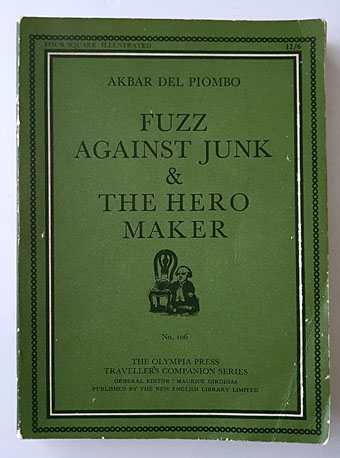
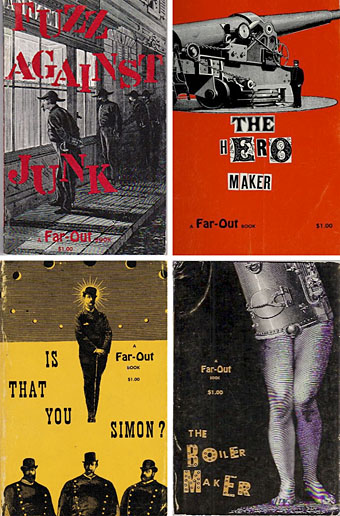
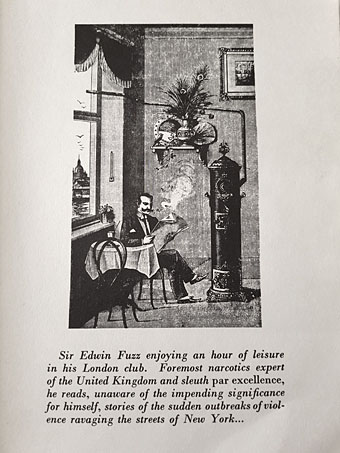
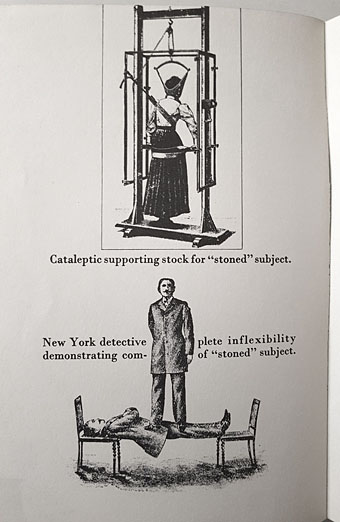
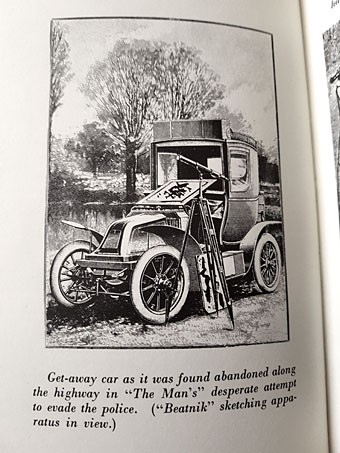
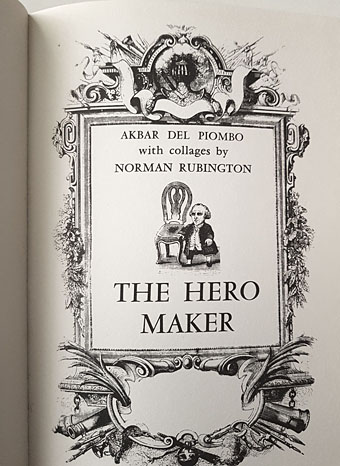
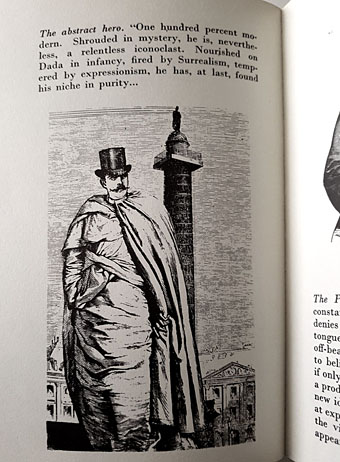
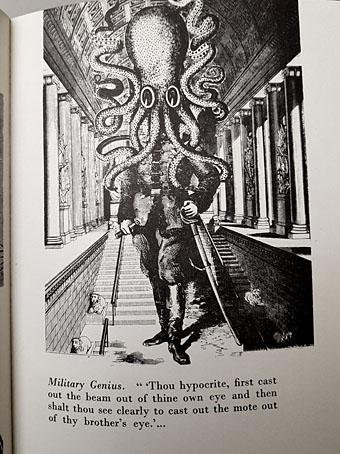
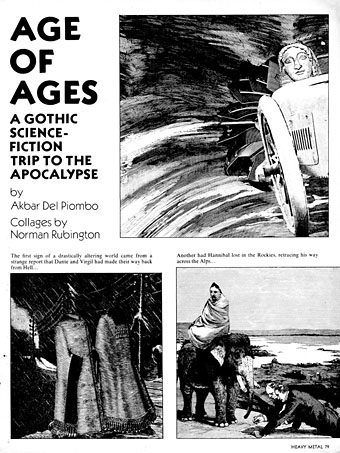
My father had a copy of “The Double-Bellied Companion” stashed in a file cabinet in his office, that I found as a teenager, so I understand the “Pavlovian” response to those classic green covers of the Olympia press!!! Why he had it and how he got it is a mystery that I never solved, but I wish he would have had this one as well, as I was just finding out about Ernst’s work and Wilfried Satty at that time. I think I need to find a copy!
This one is easier to find than some of them, at least in its NEL edition. Same with the Best of Olympia collection which compiles extracts from novels and short non-fiction pieces with more illustrated material. Also plans for Brion Gysin’s Dreamachine which are missing from my copy, no doubt removed by a previous owner.
The “Rubington 3” image reminds me of What a Life! An Autobiography (1911) by Edward Verrall Lucas and George Morrow.
https://www.goodreads.com/book/show/17282372-what-a-life-an-autobiography
http://scruss.com/wal/chapter1.html
Thanks, Andrew, someone else also informed me of the Lucas and Morrow book so it’s going to be the subject of the next post here!
I got good info from your blog